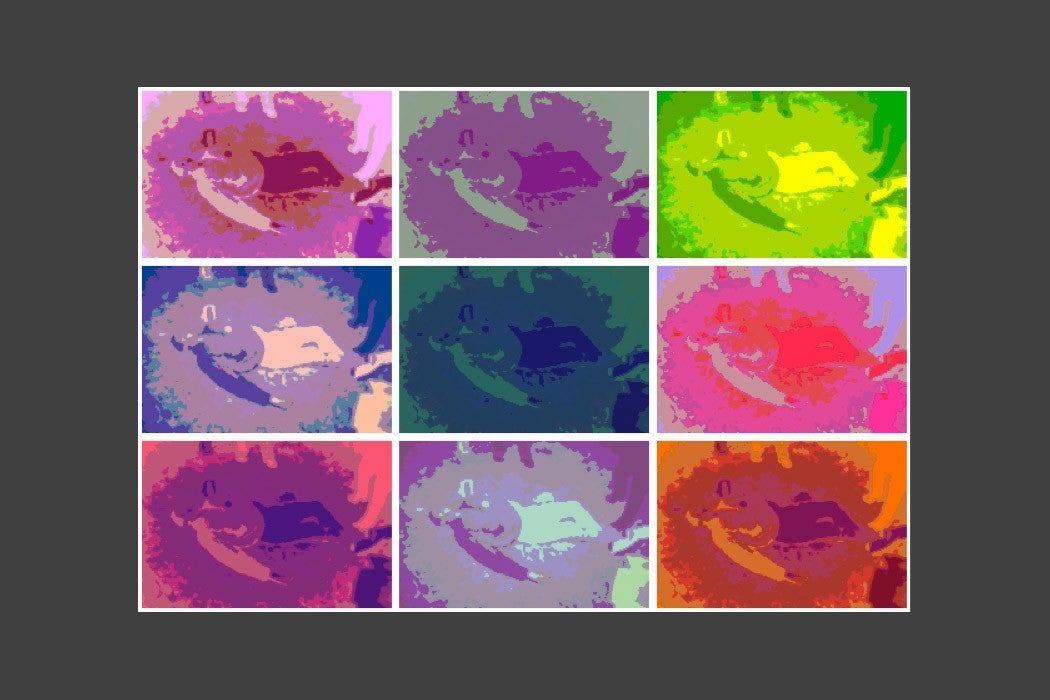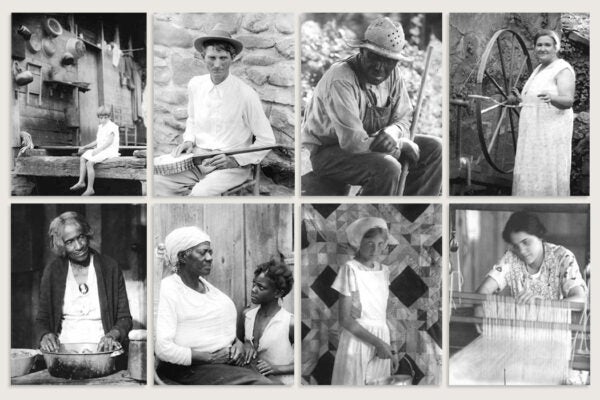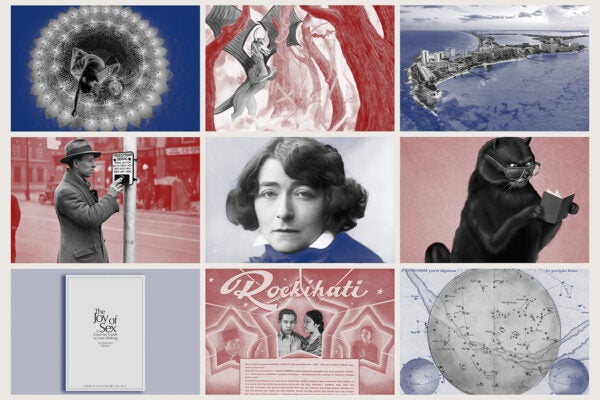Have you ever tried to convince an atheist that they should believe in god? There’s a similar difficulty associated with convincing a huge number of Americans that they should believe in black humanity. Many of us can’t see it. There is an ordinariness surrounding black dehumanization that situates black humanity as hidden, elusive, hard-to-capture. Even the discourse surrounding #blacklivesmatter is often treated with an affective apathy akin to what atheists feel when hearing people debate theology. At best, the debate turns into a political problem, treated as bad optics, black noise. In America, black humanity is a folk category; and black death might have become the new pop art.

Writing for Salon.com, Rutgers University Assistant Professor of Women’s and Gender Studies and Africana Studies Brittney Cooper recently suggested that “Black folks are being treated to an endless replay of this murder on cable news….Black death has become a cultural spectacle…. In this cultural climate, it will take, it seems, an ocean of Black bodies to convince white people that structural racism is a problem.” I wonder if black death has really become a spectacle for everyone—that is, something seen and seen for its visual effect/impact. Granted, there is a current perceptual groundswell of Americans (of all colors) for whom black life matters and many people and places and institutions are vocalizing their opinions with #blackspring events. But these voices are met with the continuous “pop, pop, pop, pop, pop, pop, pop…pop” of 9mms and 40cal. revolvers. The pause between the penultimate and final gun blasts is filled, we might imagine, by the officer remembering their training: “Breathe, relax, and kill this nigger.”
 At various points in history, America has been a black death factory. We produce dead black men and women by vigilante and law enforcement violence, then we niggerize the victims, their families, and their defenders, effectively criminalizing the dead person, such that the death is validated and repeated. An assembly line, workers and the product: ubiquitous dehumanization. Interpretively speaking, historical moments of (possible) social change have produced an anxiety that is often met with increasing violence. Such was the case during and after Reconstruction, when increased black participation in public and civic spheres was met by murderous whites that massacred blacks all across the south. Rather than learn to live with blacks exerting their humanity, whites killed them and enacted disenfranchisement laws. Physical death and social death made black humanity effectively invisible to whites, yet omnipresent to America and its cultural production. Violence erupted again in the wake of the Civil Rights Movement, when many of the Jim and Jane Crow Laws were finally overturned. Perhaps, we’re seeing today another moment of heightened anxiety. And so we kill. Add to this the symbolic and psychological impact of the first black president, in tandem with being told by social scientists that whites are losing some aspect of normative demographic footing over the next decades, and there’s little left to wonder about why so many black men and women, and for so long, are being transformed into dead black men and women. America’s preoccupation with whiteness effectively ensures we function as a social factory, anesthetized to our principle product, of which we’re drowning, in a surplus of black bodies.
At various points in history, America has been a black death factory. We produce dead black men and women by vigilante and law enforcement violence, then we niggerize the victims, their families, and their defenders, effectively criminalizing the dead person, such that the death is validated and repeated. An assembly line, workers and the product: ubiquitous dehumanization. Interpretively speaking, historical moments of (possible) social change have produced an anxiety that is often met with increasing violence. Such was the case during and after Reconstruction, when increased black participation in public and civic spheres was met by murderous whites that massacred blacks all across the south. Rather than learn to live with blacks exerting their humanity, whites killed them and enacted disenfranchisement laws. Physical death and social death made black humanity effectively invisible to whites, yet omnipresent to America and its cultural production. Violence erupted again in the wake of the Civil Rights Movement, when many of the Jim and Jane Crow Laws were finally overturned. Perhaps, we’re seeing today another moment of heightened anxiety. And so we kill. Add to this the symbolic and psychological impact of the first black president, in tandem with being told by social scientists that whites are losing some aspect of normative demographic footing over the next decades, and there’s little left to wonder about why so many black men and women, and for so long, are being transformed into dead black men and women. America’s preoccupation with whiteness effectively ensures we function as a social factory, anesthetized to our principle product, of which we’re drowning, in a surplus of black bodies.
 But here’s the craziest part, we have a hard time keeping track of the product, seeing it in its true value because to the producers, its value is mitigated through ubiquity. It’s everywhere. Many of us don’t even know what we’re making—we can’t see the product—anymore than we can see our collective humanity disassembled for parts and lying on the factory floor. We’re living in a world where magazines and TV shows and popular cultural products are inundating us with images that #blacklivesmatter, but might it be that such images only reinforce the antithesis of that idea, that they don’t for so many of us. Artist Andy Warhol once claimed that “when you see a gruesome picture over and over again, it really doesn’t have any effect.” Do these images have any effect on America?
But here’s the craziest part, we have a hard time keeping track of the product, seeing it in its true value because to the producers, its value is mitigated through ubiquity. It’s everywhere. Many of us don’t even know what we’re making—we can’t see the product—anymore than we can see our collective humanity disassembled for parts and lying on the factory floor. We’re living in a world where magazines and TV shows and popular cultural products are inundating us with images that #blacklivesmatter, but might it be that such images only reinforce the antithesis of that idea, that they don’t for so many of us. Artist Andy Warhol once claimed that “when you see a gruesome picture over and over again, it really doesn’t have any effect.” Do these images have any effect on America?
Perhaps, convincing that #blacklivesmatter is not just similar to convincing atheists to believe in god, but also akin to breaking down the barrier between high and low art, (i.e. high and low humanity, racialized binaries altogether). Are there ways today that America’s product, dead black bodies, might be the next soup can or Brillo box?
Pop Art was a movement that sought to uncover and reveal the arbitrary distinctions of high and low art that seemingly carried so much social weight but no intrinsic (or ontological) value. Remembered as the star of the pop art movement, Andy Warhol—whose studio was aptly enough named “The Factory,” forced us to see the art in the ordinary, the products. He created entire replicas of Brillo Boxes and Campbell’s Soup Cans, inserting them into art galleries, forcing us to square with the omnipresent cultural products all around us that we rely on without realizing our reliance. What’s the real difference between a Brillo Box produced by the company in a factory, and Warhol’s “Brillo Box” produced in “The Factory?” For white America, what’s the real difference between black bodies and dead black bodies? If America’s white supremacist past and present is any indicator, the answer is: nothing.
 So how might it begin to dawn on white America that black lives matter? Warhol, who wanted to show death in America, who even tried to name his first Paris show “Death in America”—an exhibit that also depicted Civil Rights protest images, might offer some methodological strategies. If Warhol were alive today, he might do something with the images of murdered black bodies lying in the streets, perhaps an effort to use their ordinariness to show the extraordinary concealed by this ordinary. What if we turned images of dead black bodies into art? Would that help to demonstrate to white America the fictive binary arrangements we effectively produce and reify through our assembly lines of violence and indifference? Might this sort of transformation of spectacle into art show us something about ourselves? In Christopher Lyon’s “Warhol in Black and White,” curator Kynaston McShine notes that “In most of the [silkscreen] works, Warhol uses repeated images to reinforce the obsessive way our thoughts keep returning to a tragedy, and to stress the flash of fame that these little-known victims achieve in death.” Would it take an installation of dead black bodies hanging from the ceiling of MoMA for white America to come to its dehumanized senses?
So how might it begin to dawn on white America that black lives matter? Warhol, who wanted to show death in America, who even tried to name his first Paris show “Death in America”—an exhibit that also depicted Civil Rights protest images, might offer some methodological strategies. If Warhol were alive today, he might do something with the images of murdered black bodies lying in the streets, perhaps an effort to use their ordinariness to show the extraordinary concealed by this ordinary. What if we turned images of dead black bodies into art? Would that help to demonstrate to white America the fictive binary arrangements we effectively produce and reify through our assembly lines of violence and indifference? Might this sort of transformation of spectacle into art show us something about ourselves? In Christopher Lyon’s “Warhol in Black and White,” curator Kynaston McShine notes that “In most of the [silkscreen] works, Warhol uses repeated images to reinforce the obsessive way our thoughts keep returning to a tragedy, and to stress the flash of fame that these little-known victims achieve in death.” Would it take an installation of dead black bodies hanging from the ceiling of MoMA for white America to come to its dehumanized senses?
Warhol held a number of well-known exhibits during his career. The silkscreen prints of Marilyn Monroe and other famous people is perhaps the most iconic. Silkscreening allowed for showing the same image, but “slightly different each time.” Another was an exhibit titled “Death and Disaster,” that presented images of death and tragic accidents. Many galleries refused to show the images, and others were ambivalent about the work the images were really doing. Warhol had this to say about “Death and Disaster”:
I thought that people should think about them sometime. The girl who jumped off the empire state building, or the ladies who ate the poison tuna fish. And the people getting killed in car crashes. Its not that I feel sorry for them. Its just that people go by, and it doesn’t really matter to them that someone unknown was killed. So I thought it’d be nice for these unknown people to be remembered by those who ordinarily wouldn’t think of them.
Would it take art, by this I mean a kind of reliance on or creative redeployment of the white preoccupation with preservation, to get more Americans to see their product, America’s product, black death, the commodity of commodities produced by American free market capitalism? And would that reorientation affect any change in the (im)possibility of American recognition that black life matters? If Warhol’s words or perspective are any indicator of an answer, prospects are grim:
Dying is the most embarrassing thing that can happen to you. Because someone’s got to take care of all your details. You die, and someone’s got to take care of the body … I never understood why, when you died, you didn’t just vanish, and everything could just keep going the way it was (492).







